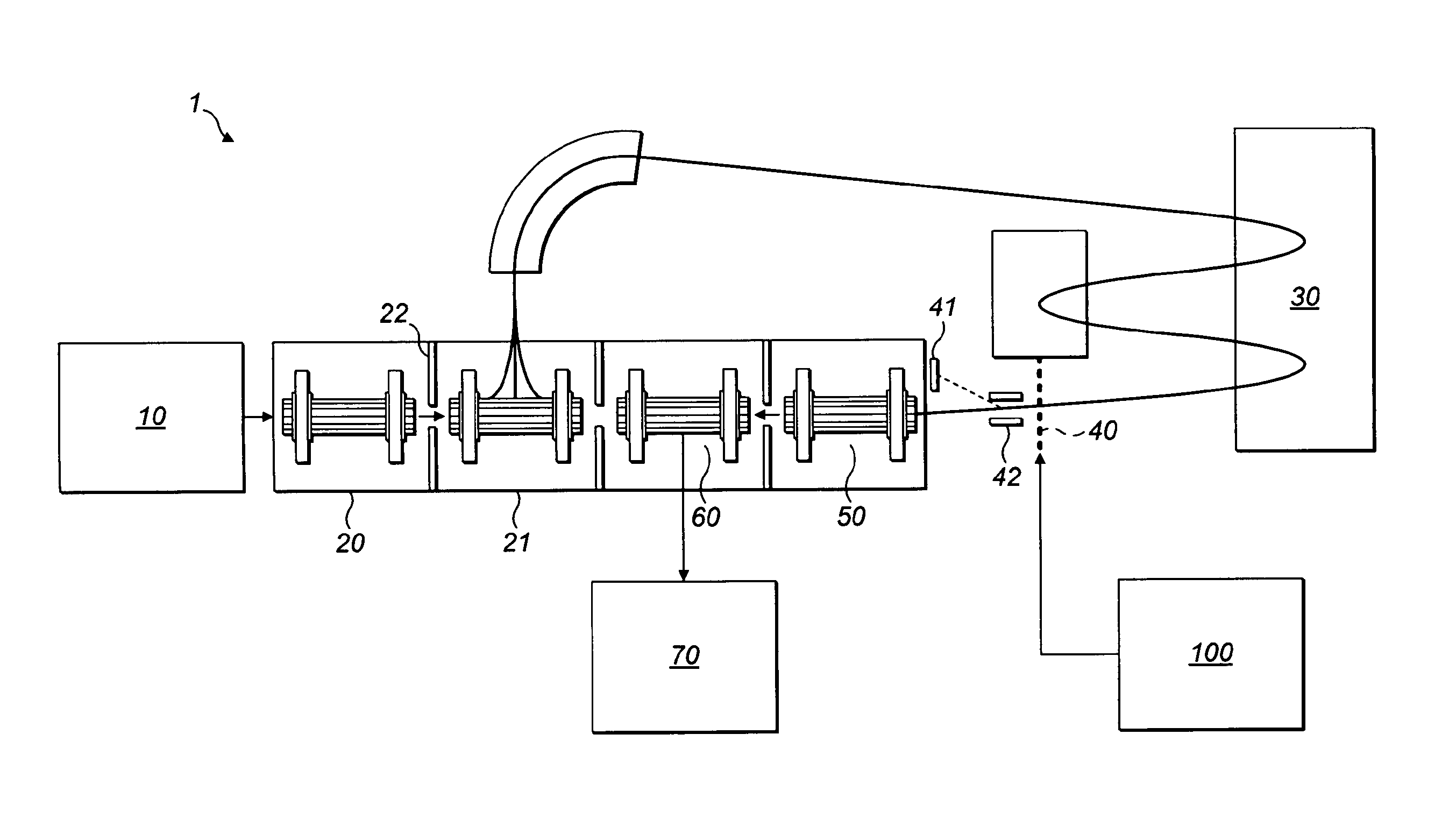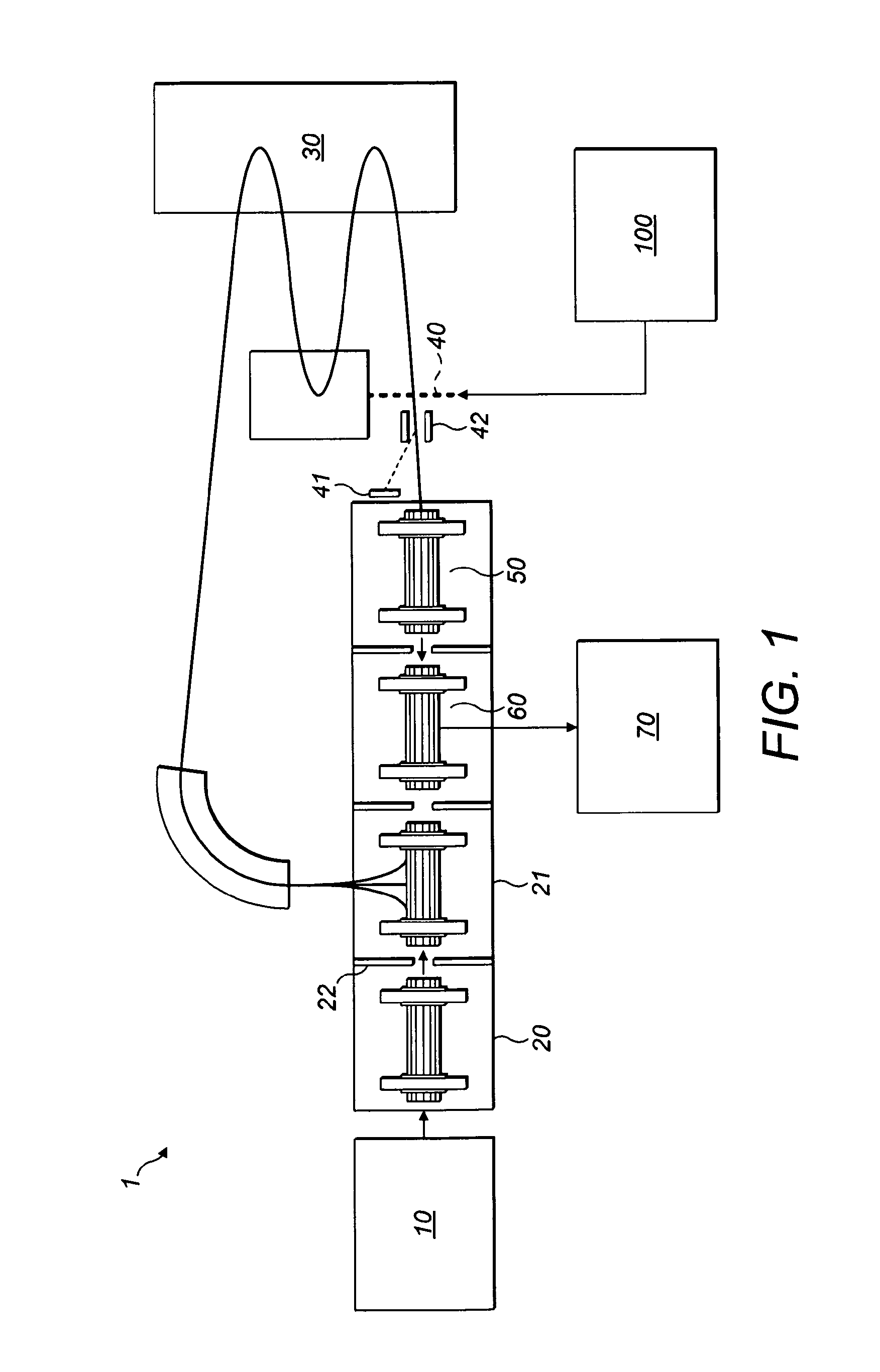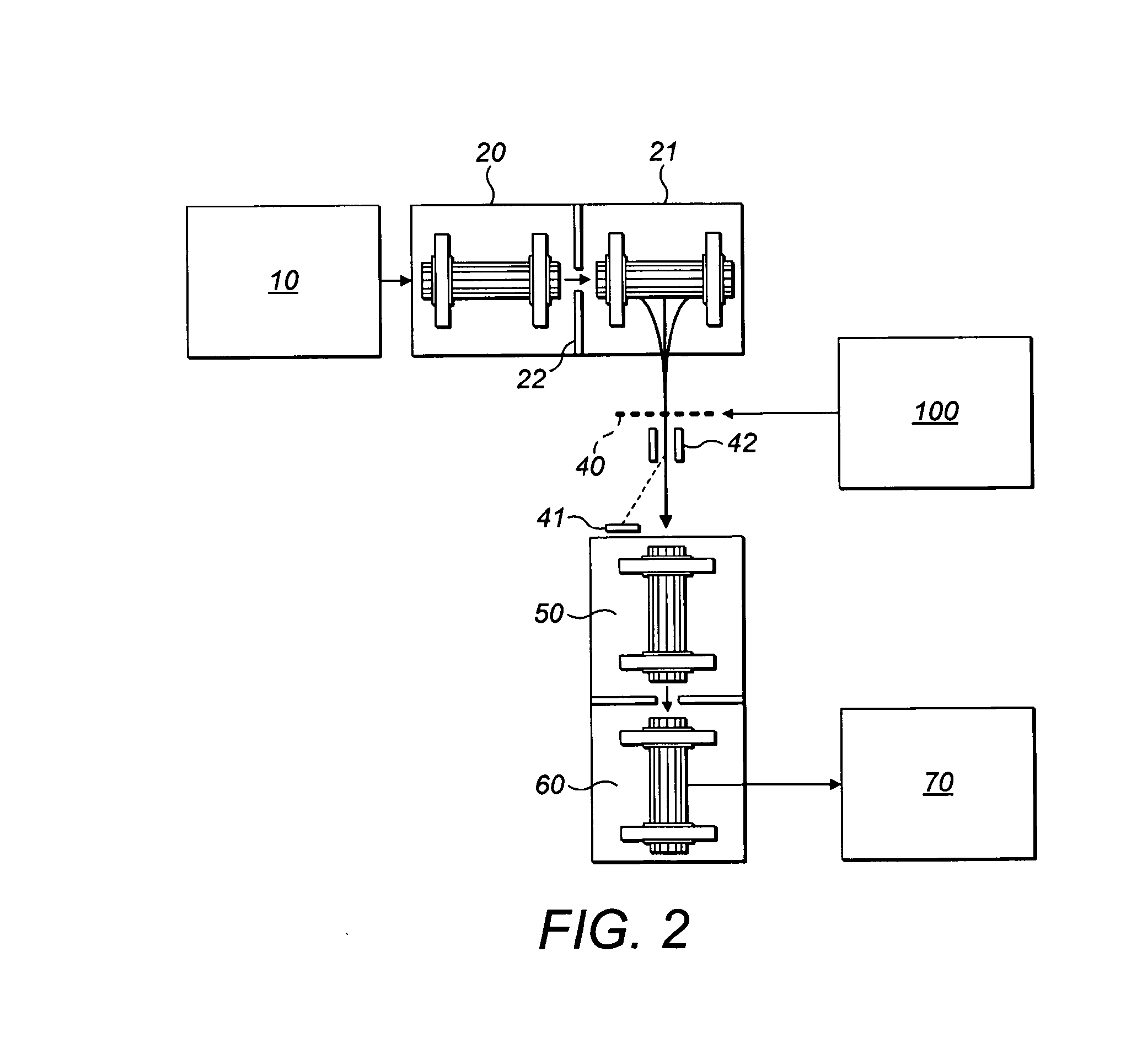Targeted Analysis for Tandem Mass Spectrometry
a tandem mass spectrometry and target analysis technology, applied in mass spectrometers, particle separator tube details, separation processes, etc., can solve the problems of wasteful operation, affecting rapid quantitation analysis, and all other m/z lost on the quadrupole rods
- Summary
- Abstract
- Description
- Claims
- Application Information
AI Technical Summary
Benefits of technology
Problems solved by technology
Method used
Image
Examples
Embodiment Construction
[0023]Referring first to FIG. 1, a tandem mass spectrometer 1 is shown. The mass spectrometer 1 comprises an ion source 10, such as an electrospray ion source or a MALDI ion source, which generates a continuous or pulsed stream of charged particles (precursor ions) to be analysed. The ions from the ion source are introduced into a first stage of rf-only storage (ion trap) 20 immediately followed by a second stage of rf-only storage (ion trap) 21. Both the first and second ion traps 20, 21 are formed by linear rf-only multipoles filled with gas and separated by an aperture 22. The aperture gates the incoming ion flow. Most preferably, the second ion trap 21 is a so called curved linear trap or c-trap—for example of the type described in WO-A-2008 / 081334. The rf frequency applied to the multipoles of the first and second stages 20, 21 is preferably between about 2 and 5 MHz. The pressure in the second ion trap 21 is chosen so as to provide ion cooling within a short time period, prefe...
PUM
 Login to View More
Login to View More Abstract
Description
Claims
Application Information
 Login to View More
Login to View More - R&D
- Intellectual Property
- Life Sciences
- Materials
- Tech Scout
- Unparalleled Data Quality
- Higher Quality Content
- 60% Fewer Hallucinations
Browse by: Latest US Patents, China's latest patents, Technical Efficacy Thesaurus, Application Domain, Technology Topic, Popular Technical Reports.
© 2025 PatSnap. All rights reserved.Legal|Privacy policy|Modern Slavery Act Transparency Statement|Sitemap|About US| Contact US: help@patsnap.com



